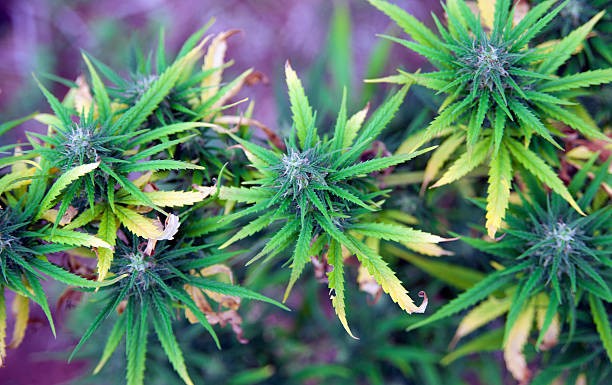
As the elixir of life for almost all life on earth, water is essential for the survival of the cannabis plant. In order to keep your cannabis plant in optimum condition, it is important to know when and how to water it. Lack of water or, in most cases, too much water will make the cannabis plant resilient, but these conditions will not last for long. Otherwise, the grower risks poor flower production and stunted growth. In the worst case, a lack of both water and nutrients can kill the cannabis.
WHEN SHOULD I WATER?
A starting point for proper watering: what time of day should I water my cannabis? Some sources say at night, others say early in the morning. If you are a novice grower, this conflicting information can be confusing. For the majority of growers, the preferred option is to water in the morning. As soon as sunlight enters, or when an artificial lamp is turned on, the cannabis plant will use the water and nutrients provided to carry out photosynthesis and promote growth. If there is no water available when this process begins, the cannabis will be adversely affected.
As a rule of thumb, if you are growing outdoors, water your plants in the early morning. If you are growing indoors, water when the light cycle starts. This will ensure that you have enough water to get you through the most intense part of the day.
WATERING THE PLANTS
Do you water the whole plant, soak the soil generously, or give it a light mist? It may not seem like a big difference, but the technique you choose will determine how much water you need to provide.
The best method is not any of the above. For the most natural form of root development, cannabis plants should ideally be watered from below.
By placing the pot in a bowl of water, the roots will pull what they need upwards out of the soil. It also stimulates the roots to grow downwards, which helps the overall growth of the plant. If there is still water left after 30 minutes, remove the excess. If there is no water left, add a little more to see if it has been absorbed. Because of osmosis’s unique process, the root structure will only absorb as much water as it needs – no more and no less.
If it is not possible to water from below, water the substrate by adding water from above until you see the water drain below. Do not water so much that the pool remains on top or the bottom becomes cloudy. You want to soak the whole substrate, but do not flood it. Generally, the water should have drained when you move on to the next plant/pot. It can be difficult to get the right amount of water until you start to feel your plants thirst. Add a little at a time until you feel the water has drained and the plants are well watered.
Drip irrigation via an irrigation system is another very efficient method. It is difficult to set up, but it eliminates much of the complexity and risk involved in watering by hand. The advantages of this method will be discussed later.
HOW OFTEN SHOULD I WATER?
The simplest and most versatile method is to water every 2-3 days, depending on the soil and the lighting intensity. The soil can dry out, in fact it should almost dry out. If your soil or other substrate is constantly wet, it can encourage fungal growth and cause root death.
ADDING NUTRIENTS
Adding nutrients to water is easy. Just follow the manufacturer’s guidelines and mix thoroughly. Once you understand the intricacies of the strain you are growing, you can adjust the nutrient concentration accordingly. Once you are satisfied with the results, water as you would with normal irrigation.
THE DANGER OF OVER-WATERING YOUR CANNABIS
Novice growers generally make this mistake, but for many growers, over-watering is a difficult habit to overcome. Our desire to provide the best possible care for our cannabis plants can lead us to become over-zealous about the resources we need.
In addition to water, the roots also need oxygen. If the root system is constantly submerged, oxygen is not available and the plant cannot grow. The root cells will die and so will the remaining plant structure.
In addition, excess water can cause root rot, mould and mildew, which can kill all of your plants or cause bacteria to do the same over time. Fortunately, it is easy to spot the mistake of over-watering, because most of the plants look as if they have wilted in a pot soaked with water, unfortunately, you can either just wait for the substrate to dry out or move the plants to a fresh, dry substrate and another pot move you can.
If root rot has occurred, cut away the affected part before transplanting. Few companies offer a solution to root problems. In some cases, beneficial or symbiotic fungi can help to avoid these problems.
WHAT HAPPENS IF I DON’T GIVE MY PLANTS ENOUGH WATER?
The leaves wither and curl up, the root structure shrinks and the plant structure sags down from lack of starch. In the long term, the cannabis plant will wither without water, just as humans, animals and all other plants do.
Without the nutrients provided by water, all the plant’s natural processes (such as photosynthesis) will slow down or stop altogether.
Persistent dry conditions will eventually cause permanent damage to the plant, stunting growth and reducing flower productivity.
On the other hand, short-term drought can be easily remedied by giving the plants a little but frequent watering. Once you have ensured that your plants are hydrated, continue with the regular watering cycle.



Leave a Reply